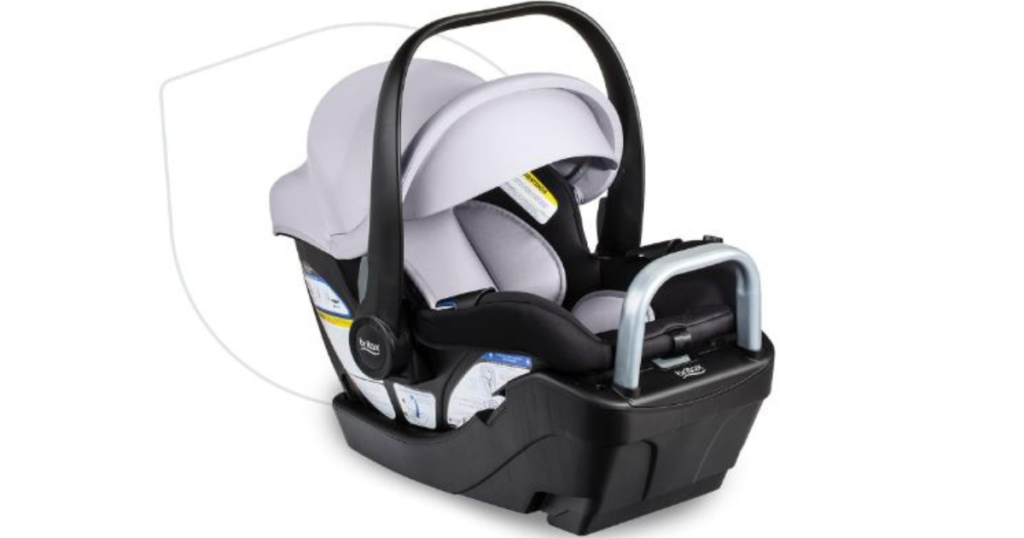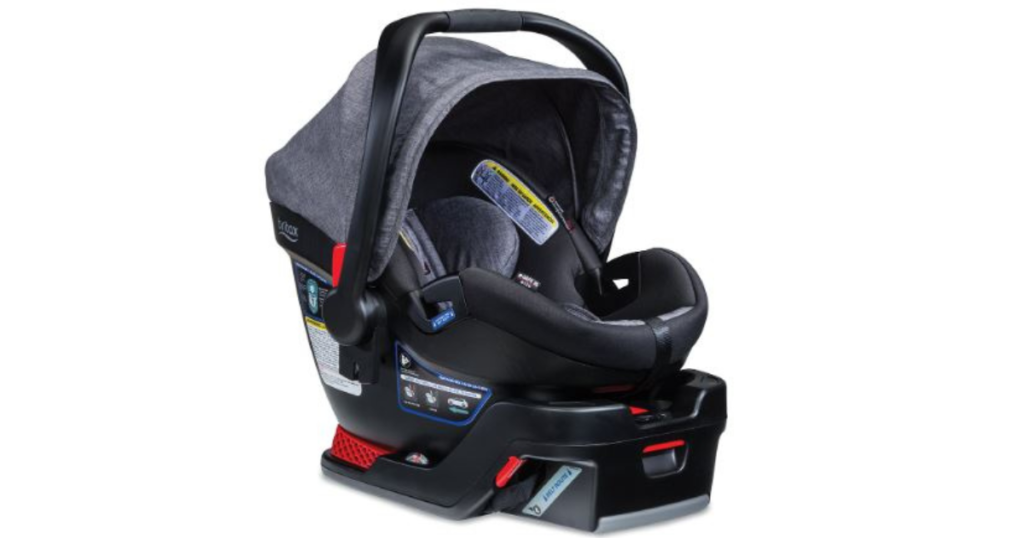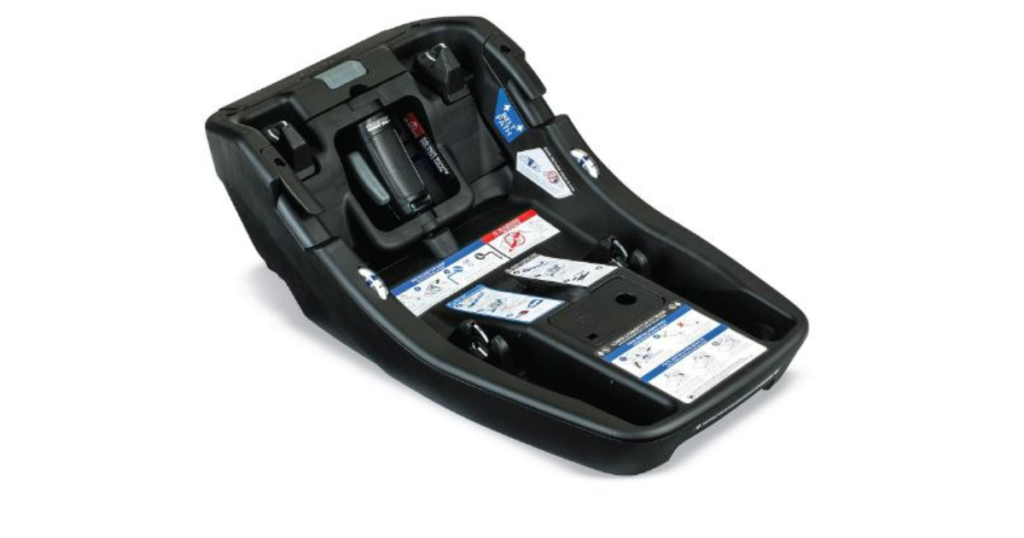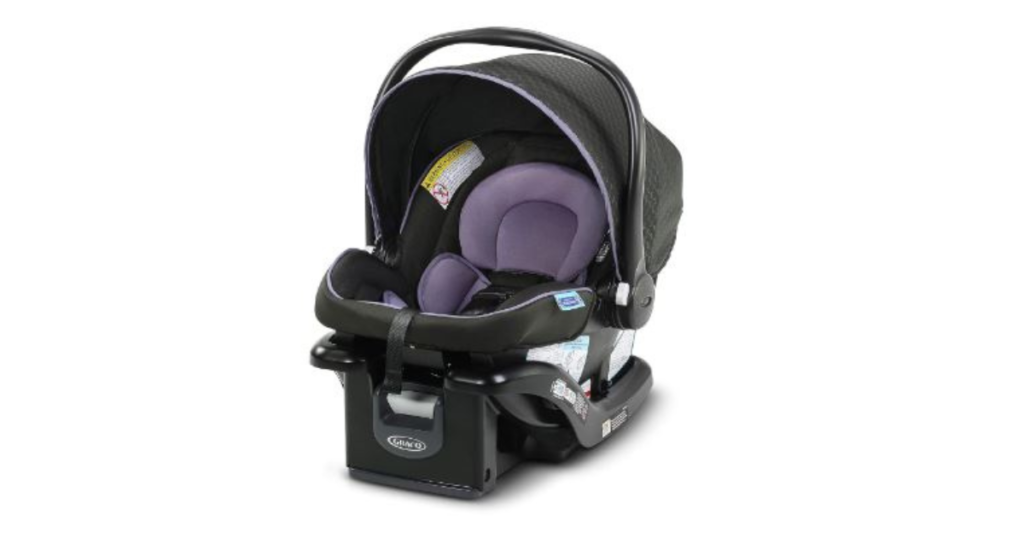One of the many questions new parents often grapple with revolves around ensuring their child’s safety during travel: “When is my baby too big for infant car seat?”
It’s a pressing concern, and rightfully so. Infant car seats are designed specifically to protect our tiniest family members. But as with all good things, there’s a limit to their use.
This article explains to parents when a baby becomes too big for an infant car seat, and other important things to know about car seats as your child grows. Let’s begin with the crux of the matter.

For How Long Can My Child Ride On An Infant Car Seat?
Standard Duration
Typically, most infant car seats can accommodate babies from birth up until they’re about 10 to 24 months old. However, age isn’t the sole determinant to help you know when your little one is too big for infant car seats because babies grow at different rates.
Other Factors that Determines when a Baby Becomes too Big for Infant Car Seats
Apart from age, the weight and height of your baby play an important role in determining when to stop using an infant car seat.
Infant car seats are specifically designed for babies who weigh between 4-35 pounds and are up to 32 inches tall. This means that your child can use an infant car seat from birth until they reach the maximum weight or height limit specified by the manufacturer.
Most infant car seats have a lifespan of 2-3 years, depending on the brand and model.
Always remember that these seats are designed to provide maximum protection for infants. The weight and height limits are carefully determined based on extensive safety testing.
Therefore, if your little one is growing quickly and attains the maximum weight or height limit of the car seat at just 10 months old, you should stop using the infant car seat. Resist the temptation to continue using the car seat because you feel the usage time is too short.
Are There Infant Car Seats With Extended Usage Time?
Yes, there are some infant car seats that come with extended usage time. These seats can accommodate a higher weight and height limit than traditional infant car seats and may last up to 4 years. However, it’s important to note that these seats tend to be more expensive.
An example of an infant car seat with extended usage time is the Graco SnugRide SnugFit 35 DLX. According to Wirecutter, this car seat is considered the best infant car seat for most families in 2023. It offers extended usage time and provides excellent safety features.
The benefit of opting for an infant car seat with an extended usage time is that it can be a cost-effective decision in the long run. It also ensures your baby enjoys familiar comfort for longer.
Nevertheless, before purchasing an infant car seat with extended usage time, make sure to carefully check the weight and height limits. It’s also essential to follow the manufacturer’s recommendations for proper usage and installation.
What Next After My Baby Outgrows The Infant Car Seat?
Once your baby reaches the maximum weight or height limit of their infant car seat, it’s time to switch to a different type of car seat. The next step is a larger car seat which is usually a convertible car seat, which can be used in both rear-facing and forward-facing positions.
A convertible car seat has higher weight and height limits for rear-facing than the traditional infant car seat. Therefore, you should continue with the rear-facing mode on the convertible seat (until your child outgrows the rear-facing mode) before transitioning to forward-facing.
Some parents may choose to move their child directly to a forward-facing car seat once they outgrow the infant car seat. However, it’s important to note that rear-facing car seats provide better protection for young children in the event of a crash.
Do I Need An Infant Car Seat Or A Convertible Car Seat?
Having an infant car seat or a convertible car seat is a common question among parents, and the answer depends on your specific needs.
Infant car seats are portable and can be easily removed from the car, making them ideal for families who frequently travel with their babies. Also, if you plan to ride your little one in a stroller, then you need to have an infant car seat because convertible car seats are bulky and not compatible with strollers.
On the other hand, convertible car seats may be a more cost-effective option as they can be used for a longer period of time. It’s essential to carefully consider your lifestyle and needs before deciding on which type of car seat to use.
In my case, I had both the infant and convertible car seats because I thought I needed them for the best experience. If you can have both, that would be great, but if you think you can do without the infant car seat, go ahead with your plans.
Should Baby Seat Be Behind The Driver Or Passenger?
According to safety experts, the safest place for a baby seat is in the back seat, preferably in the middle. This placement minimizes the risk of injury from a side-impact collision.
However, if you have multiple children and need to install more than one car seat, it’s important to refer to the car seat manual for proper installation.
From general observation, some parents prefer behind the driver’s seat as it allows them to check on their child using the rear-view mirror quickly. However, if you’re parking on the street, it might pose a safety risk when taking the baby out.
Final Thoughts: When is My Baby too Big for Infant Car Seat
Your baby is too big for an infant car seat when they reach the maximum weight or height limit specified by the manufacturer.
Whether you have a Nuna car seat or any other brand, ensuring your baby’s safety while on the road is paramount. As they grow, staying informed about when and how to transition car seats is crucial.
Always prioritize safety guidelines and your child’s comfort. And remember, each baby is unique, so go with what feels right for your family.




